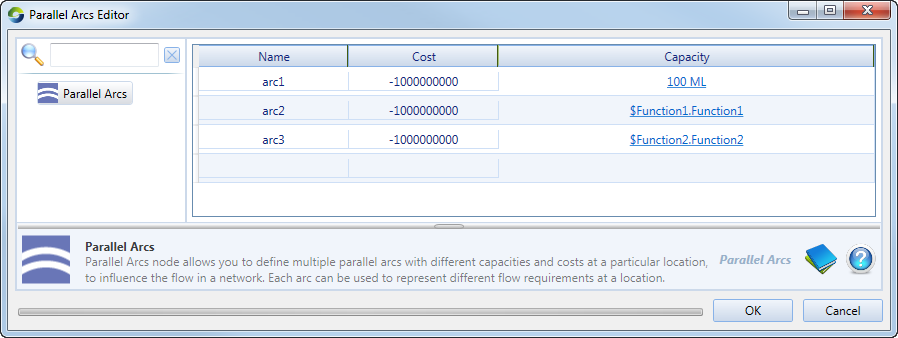The NetLP Parallel Arcs node allows you to define multiple parallel arcs with different capacities and costs at a particular location, to influence the flow in a network. Each arc can be used to represent different flow requirements at a location, such as an environmental or hydrological demand, or flood flow.
It is implemented by a construct with a minimum of two parallel arcs. The arcs allow different rules or incentives to be applied to the same river or stream reach. You define the cost and capacity for each separate arc, which may represent a separate rule. If you create a parallel arc node but do not define any arcs, Source creates two arcs - one representing overflow at the location, ie. high cost and high capacity (overflow arc), the other opening up the node to allow all flow to pass, ie. zero cost and high capacity. In this situation, the node will not influence flow distribution within the model.
The overflow arc is created by default, and has a very high cost and infinite capacity. As the name suggests, any excess flow at the node location is passed through this arc.
Configuring arcs
To configure an arc (in addition to the overflow arc), open the node's feature editor (Figure 1). The table shows each arc, along with its associated cost and capacity.

Enter the following information in the table:
- Name of the arc;
- Cost – cost of the arc in the order phase; and
- Capacity – actual capacity of the arc in the order phase. This can be specified as a single value or a function.
To delete an arc, click on the appropriate row and press the Delete key on your keyboard.

